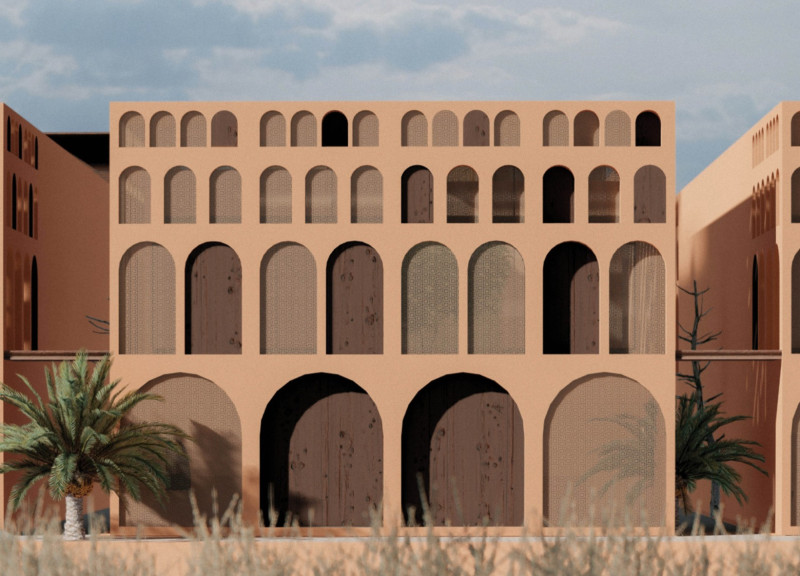5 key facts about this project
At its core, the project serves as a multi-functional space designed to accommodate various activities. Its layout facilitates fluid movement, promoting interaction among users while still offering areas for privacy and contemplation. The design encourages community engagement, fostering a sense of belonging and connectivity among visitors. The architectural form speaks to a purpose-driven approach, with each element contributing to the overall functional and aesthetic objectives.
The exterior of the building is characterized by a harmonious blend of materials that not only complements the surrounding landscape but also reinforces the sustainable ideals embedded in the project. The choice of materials such as wood, glass, and concrete reflects a commitment to durability and environmental responsibility. The wood provides warmth, offering a tactile contrast to the sleek glass surfaces, which enhance natural light and provide scenic views, while the concrete elements ground the structure in its context.
One unique aspect of the design is the innovative use of natural light, which has been optimized through strategically placed windows and skylights. This design approach promotes energy efficiency and creates a bright, airy environment. The interior spaces are thoughtfully organized, prioritizing user experience and comfort. Spaces are delineated without the use of rigid barriers, instead employing flexible partitions that can be adjusted according to specific needs.
The interplay of indoor and outdoor spaces is another notable feature of this project. Outdoor areas are seamlessly integrated with interior functions, encouraging outdoor activities and taking advantage of the local climate. This hybrid approach not only extends the usable space of the building but also fosters a connection with nature, enhancing the overall atmosphere of the environment.
The landscaping surrounding the building has also been designed to enhance the user experience. Native plants and materials were selected to promote biodiversity while minimizing maintenance. This aspect of the project underscores a commitment to sustainability and the conservation of local flora, positioning the architecture not merely as a structure but as a part of a broader ecological system.
Furthermore, the project incorporates technology in subtle ways that improve functionality and user engagement. Smart building systems have been integrated to manage energy use efficiently, further reducing the environmental footprint of the structure. These systems contribute to a more sustainable operation without detracting from the user experience.
In summary, this architectural design project exemplifies a harmonious balance between form and function, showcasing an innovative approach to space that is sensitive to its environment and community. Its thoughtful material selection, sustainable practices, and user-centered design principles distinguish it within the realm of contemporary architecture. To truly appreciate the intricacies of this project, including the architectural plans, architectural sections, and architectural designs, it is recommended to explore the project presentation in detail. Engaging with these elements will provide a comprehensive understanding of the architectural ideas and the intentions behind this well-conceived design.


 Labeebjan Sham Sudeen,
Labeebjan Sham Sudeen,  Vishnu Krishna Kurup,
Vishnu Krishna Kurup, 























